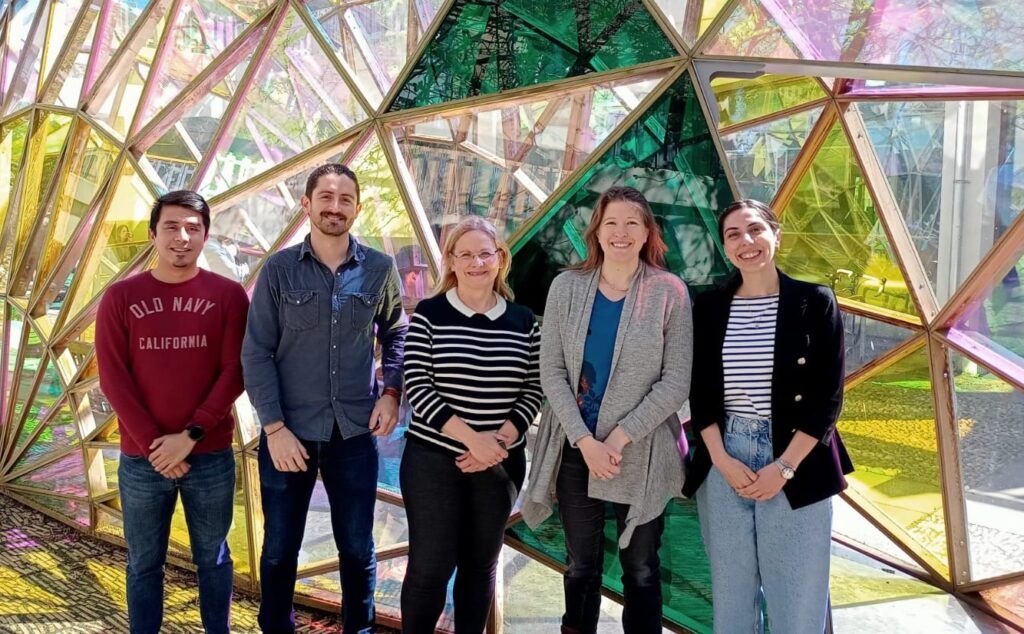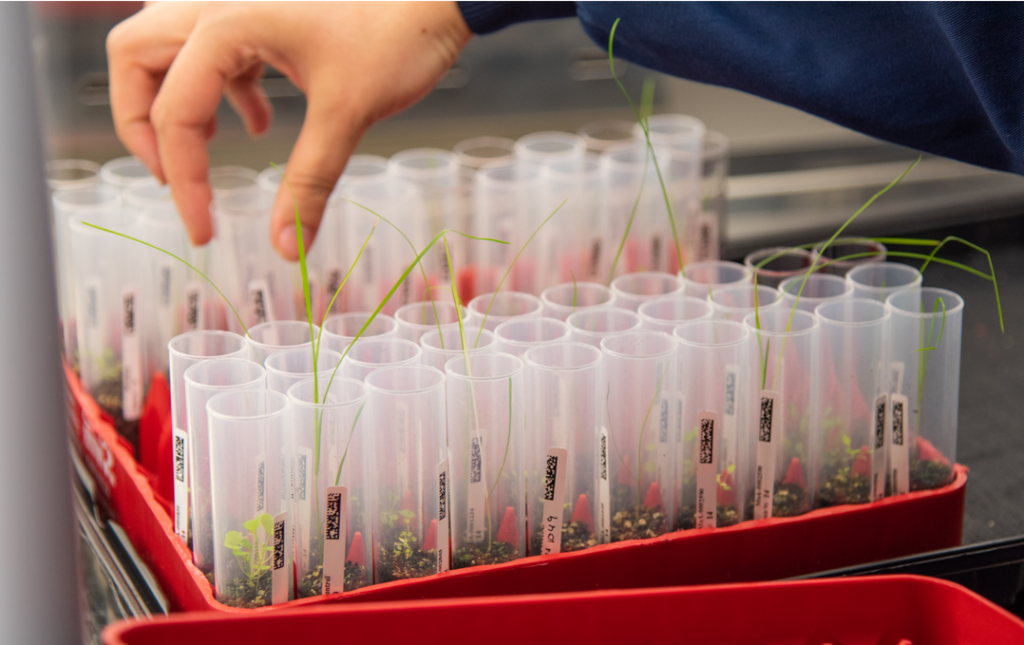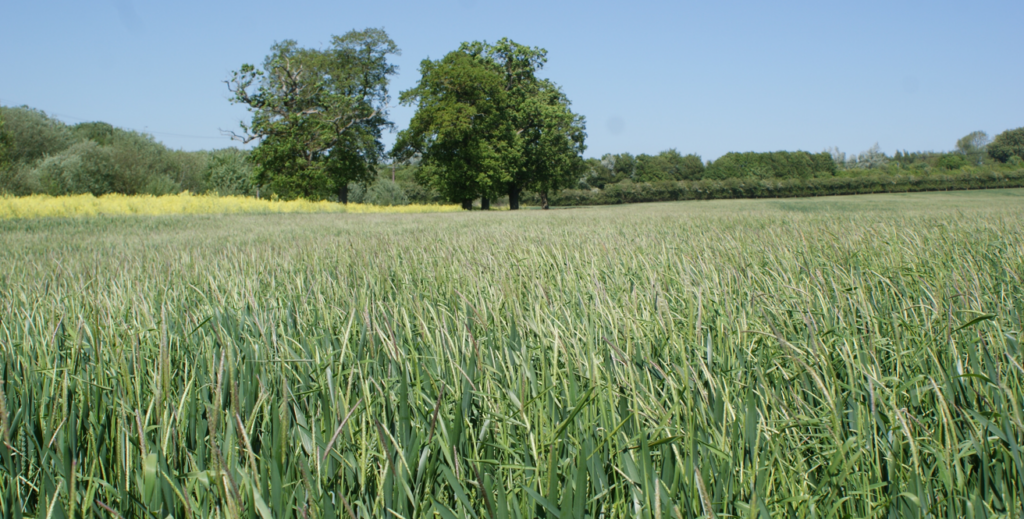Three start-ups are looking at new ways to deliver effective crop protection solutions that could overcome current resistance issues. Tech Farmer gets the insight.
Tiny carbon particles, not dissimilar to burnt sugar, could hold the key to a completely new method of delivering crop protection.
First discovered in 2004, carbon dots are extremely small spherical nanoparticles made from carbon, explains Dr Heather Whitney, a plant science researcher at the University of Bristol and co-director of CDotBio, a spin-out company aiming to unlock the potential of carbon dots in agriculture.
“There are various types of these particular nanoparticles, but the version we’re using is basically burnt sugar. Whenever you cook food, or burn a carbon source, pyrolysis will lead to the production of carbon dots.”
It’s not quite as simple as just burning stuff to produce the carbon dots, she stresses. “What the chemists do is very precise, so you know exactly what you’re getting out, otherwise you can produce something that isn’t very good for plants.”
Heather had previously investigated natural nanostructures in plants and their biological impacts.
“For example, if you look at a petal’s surface it has textures. These are at the micro scale – around 100 micrometres in size, which is the sort of size that gives a tactile feel for a bee.
“But we also found that on the petal surface there are natural nano structures – another scale down. So the surface of a petal has individual cells – usually conical shaped – and overlaying each cell are striations and ridges. These are at the nano scale.
“And at the nano scale these ridges interact with light, so the petal surface can give rise to iridescence and structural colour because of the interaction with light waves,” she explains.

That led to a PhD student, Dr Tom Swift, working at the Bristol Centre for Functional Nanomaterials, to start researching whether fluorescent nanoparticles could enhance photosynthesis in plants. “Obviously increasing crop yield and carbon capture is important,” Heather says.
Helped by Prof Carmen Galan, who was making fluorescent nanoparticles for research into their biomedical properties at the university, the first type of nanoparticle Tom made were a disaster, Heather recalls.
“They were completely toxic to plants. But the next ones he made were carbon dots and he found these were both very effectively taken up by the plant and appeared to enhance plant growth.”
Quite how and why these carbon dots improve growth is still being debated, Heather says. “There’s a number of theories, which are all interlinked with photosynthesis.”
One hypothesis is they might help optimise photosynthesis under high light levels. “Although plants use light for photosynthesis, if there’s too much, something called photodamage occurs and the plant shuts down their systems. If that happens for too long, you’re not optimising photosynthesis and the theory is that carbon dots could be helping with that.”
We appear to have a system that can carry nucleotides into a mature plant using any method that can apply water.
But the more exciting discovery was that the plant will take up carbon dots in the process of taking up water, giving the potential for using carbon dots to carry a payload into the plant.
“This is when we started trialling using the carbon dots to carry small amounts of nucleotides into the plant leaf.”
The reason for the trial linked back to Heather’s research on iridescence in plant leaves, when she found that plants with this property were also genetically recalcitrant.
That means that the plant cannot be genetically transformed by any of the well-established methods of modification, such as using Agrobacterium tumefaciens.
“What was exciting is that when we tried using carbon dots to carry nucleotides into some of these genetically recalcitrant plants, it appeared to work in all of them.
“We appear to have a system that can carry nucleotides into a mature plant using any method that can apply water.”
That opens up a wide range of possibilities for the how the discovery could be used commercially, but the initial focus is to develop biopesticides, explains CDotBio’s Dr Teo Garcia-Millan.
“There is an urgency to find new ways to treat or protect crops because farmers have lost a lot of tools to do that, and the situation is changing because of how our climate is altering.
“So we are focused on developing biopesticides that are selective for specific crops or pests without having any damaging effects to the environment and human health.”
The initial target is to use RNA (ribonucleic acid) silencing to target specific Lepidoptera species – damaging pests such as fall armyworms, cotton bollworms and corn borers are in this order – with the US seen as a key initial market because of a more certain regulatory pathway, Teo suggests.
The principal role of RNA, which is made up of nucleotides like DNA (deoxyribonucleic acid), is to act as a messenger, converting the genetic information stored in DNA, into a format used to build proteins.
Researchers have found that it is possible to use that capability to also disrupt gene activity, by delivering a chunk of RNA, which instead of instructing a gene to make a protein, switches that gene off.
“If you can deliver that in a way that a pest or insect takes it up, you can actually target a single gene in a single insect species and shut that gene down,” Heather explains. “If that’s an essential gene, it’s an effective way of weakening or killing that pest.
“And because it is sequence specific you can make sure you are only targeting a single pest species, which massively reduces off-target effects.”
Another advantage of the technique is that if the pest starts to develop resistance, for example by slightly changing the DNA code in the gene to switch it back on, it is possible to modify the sequence to potentially overcome the resistance.
It’s not just pests that this technology could target – it’s also possible that it could be used for weed control, Heather points out.
“A key challenge for farmer is that weeds, like blackgrass, are developing resistance to herbicides. The genes that cause that resistance are known, so potentially you can use RNA to silence the resistance genes, so those blackgrass plants are no longer resistant to herbicides.
“There is also potential to try combinations of ways of increasing the stress in a particular plant so that it can’t cope with herbicides or help reduce the amount of herbicide needed,” she suggests.
A key next step is getting the carbon dot technology registered as an inert material, initially in the US, with regulatory approval for any biopesticides delivered by the carbon dot likely the responsibility of partners developing that type of application.
“We’re trying to create something which analogous to the Apple App store or Google Play Store,” Teo says. “It’s a platform to deliver the apps – the RNA silencing genes – to the plant.
“That type of technology is being developed by other companies, which is very exciting, and we want to help unleash this potential in agritech applications, including agrochemicals.”
Moa Technology moves step closer to delivering new herbicides
New herbicides with novel modes of action discovered by start-up agricultural biotechnology company Moa Technology are set to begin field trials in 2024 in locations around the world including the UK.
The firm, which was spun out of the University of Oxford’s plant science department in 2017 uses ground-breaking research by co-founders Prof Liam Dolan and Dr Clément Champion, to find potential new herbicides that can tackle herbicide resistant weeds.
More than 750,000 chemical and natural products have been screened using its high throughput Galaxy platform, which uses miniaturised plants to looks for unique symptoms, with around 60 new novel modes of action identified.
These miniaturised plants can only be seen through a microscope, says Dr Virginia Corless, Moa’s chief executive officer. “We treat these with a chemical, whether a synthetic one made in a lab or a natural chemical from an organism, and use high content imaging to closely observe the symptoms we see in the miniaturised plants to get an indication of the mode of action.

“By understanding the symptoms we see from commercial modes of action available in the market, and using a much higher resolution of symptomology, we are able to quickly and efficiently identify chemistries that are doing something different,” she explains.
“So in that very first step of screening, we’re able to identify areas for further research that are likely to have a novel mode of action different from what is available today.”
Moa’s process differs from the approach used by agchem companies, which first looks for efficacy on larger plantlets in glasshouses followed by mode of action further along the process.
“With Galaxy we’re simultaneously getting an indication of efficacy and novelty of mode of action.”
New modes of action are critical, she says, for overcoming resistance.
Once discovered the next step of the process is using a combination of genetics and lots of other data from tools that look in detail at what is happening at a cellular level, to crack the puzzle of what these new chemistries are doing, she says, helping to identify the target protein in the weed for the chemical’s mode of action.
That early knowledge of mode of action helps both efficiently optimise identified compounds into better products and identify and address potential toxicity and environmental safety issues from the start.
The first raft of potential new compounds has successfully come through rigorous tests in glasshouses to begin field trials this year, with at least one in the UK with further sites in two or more of Europe, North America and Australasia.
“These will not only test weed control efficacy against appropriate commercial standards but also crop selectivity,” Virginia adds.

While she was not prepared to say at this stage what those weed targets are, she says there is a lot of diversity within the firm’s pipeline. “We are looking at both broadleaf and grassweeds, different timings of activity and all the different profiles that could be of value to farmers.”
Commercialising what she describes as a diverse pipeline is likely to require a portfolio of approaches, she suggests, including partnerships with various types of partners at different stages of the commercialisation process.
“From our perspective, one of the most important things is continued stewardship and partnership of our products as they move towards the market. We believe the new herbicides we’re discovering have the potential to make a big impact for farmers and for sustainability, and it’s important to us that we continue to have a role in stewarding to ensure they do so as they move towards commercialisation.”
Gene editing firm seeks to resurrect varietal disease resistance
When diseases overcome resistance genes in crops, that’s usually the end of that gene’s usefulness to plant breeders, who move on to look for another source of disease resistance to breed into a variety.
But Resurrect Bio, spun out of The Sainsbury Laboratory in Norwich, is looking to restore those resistance genes using gene editing.
“Our system is quite unique,” says chief executive officer Dr Cian Duggan, “in that we initially bypass crop and pathogen experiments.
“Working with a crop is the real bottleneck in disease resistance trait discovery, as it takes a long time to grow, and then doing experiments with pathogens takes even longer.
“We bypass all of that using a computational biology approach to understand the relationship between the crop resistance gene and the pathogen, and then crucially use a model organism, which enables us to express a gene of interest in just a few days.”

The team uses both to figure out which resistance gene is being defeated by which pathogen gene, and then uses gene editing to make changes to overcome that.
“In some cases that can be just one DNA base change, as was the case in our proof of concept against potato cyst nematode in potatoes.”
The native resistance genes are then edited in the crop to do large scale trials, with Resurrect Bio striking licencing deals with breeders to bring the trait to market.
Initial targets for the technology are diseases in soybeans, including Asian soybean rust and yield-thieving soybean cyst nematodes, but the firm has built a platform technology that is capable of dealing with any crop, most pathogens and some pests, Cian says.




